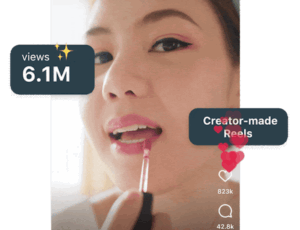Commerce media is booming, and everyone wants a piece of it. For commerce media networks, servicing the growing pool of media buyers brings many new opportunities and new challenges.
In the short history of commerce media, hundreds of networks have emerged. Yet most premium on-site and in-store inventory remains in walled gardens. Media buyers are left juggling disparate tools, inconsistent measurement and legacy workflows. The result? Demand is stalling, not because of a lack of interest but because commerce media still lacks the interoperability, transparency and ease-of-use needed to meet the expectations of modern media buyers.
With more supply than ever to choose from, media buyers want seamless experiences, full-funnel performance and AI-powered outcomes with less complexity. The networks that make their inventory easy to buy and give open access to key formats like sponsored listings and in-store ads will be the ones that win more ad dollars.
The unlock? Making all this possible through the DSPs that media buyers already use today.
To enable that greater accessibility, commerce media networks must embrace the full ad ecosystem, including SSPs, to package and surface their inventory in a way that’s interoperable with DSPs. They’ll need to do it without weakening their unique strengths – like targeting, attribution and measurement – that make commerce media so effective.
Enter the programmatic ecosystem
Automated, predictive and deeply personalized, the programmatic ecosystem offers the infrastructure to unify buying, drive real-time relevance and scale demand. Programmatic drives hundreds of billions in media spend each year.
The appetite is there. In Koddi’s independent research, 80% of advertisers and agencies said they’d be more likely to shift budget to commerce media if they could buy it programmatically. The programmatic ecosystem provides an incremental channel for commerce media networks to expand their business. They should continue to pursue direct supplier relationships and offer sophisticated self-serve buying experiences. But by allowing media buyers to buy commerce media inventory programmatically via their DSP of choice, commerce media networks can expand their reach. They can meet buyers where they already work, reduce fragmentation and tap into new sources of ad spend.
It’s not about replacing existing models; it’s about enhancing them.
Unlocking scale without sacrificing control
AdExchanger Daily
Get our editors’ roundup delivered to your inbox every weekday.
Daily Roundup
But the key to adding commerce media to the programmatic ecosystem involves commerce media networks continuing to have control, ensuring that each bid, whether it comes through programmatic, managed or self-serve channels, is optimized with commerce-first machine learning, clear prioritization rules and first-party data targeting.
With the right backend setup, commerce media networks always decide which DSPs receive bid requests and inventory. They still manage the rendering of an ad in the desired format. They can also review the data being sent to the SSP. And they maintain control over demand, allowing them to optimize for direct or programmatic sales, depending on which bucket of ad spend they are looking to capture.
What’s more, they include guardrails for targeting and brand safety, such as the possibility to create private marketplaces to further control the experience on their networks.
Advertisers and agencies enjoy a more holistic experience
When media buyers can access commerce media inventory through the DSPs they already use for full-funnel campaigns – and buy on- and off-site formats like sponsored listings, display and in-store video and audio – the result is a streamlined workflow.
Paired with consistent measurement frameworks, it becomes much easier to compare performance and ROI across omnichannel initiatives and make the case to invest more budget.
Scale without compromise
Programmatic offers a new way for networks to move beyond shopper budgets and into the national media plans that drive incremental growth. It’s a path that gives media buyers the efficiency, targeting and measurement they expect.
The next step is to unlock the full potential of an ecosystem that’s already proven its value. Commerce media doesn’t need to reinvent the model; it just needs to plug into an existing demand source that works. Now’s the time to bridge the gap and build what’s next.



















